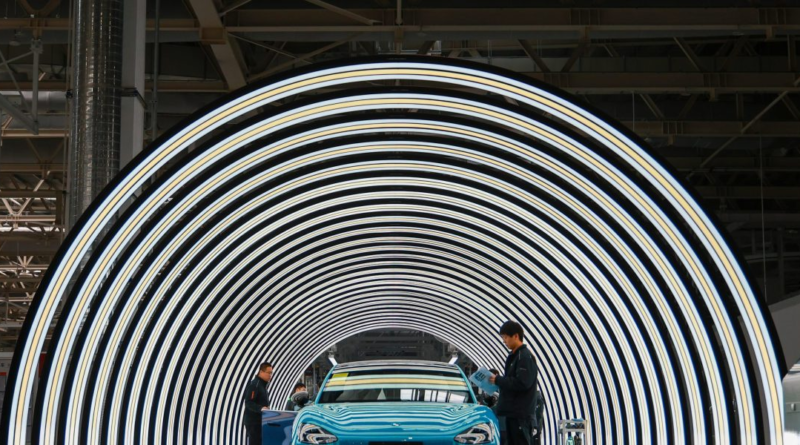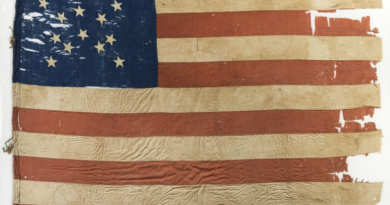Biden’s tariffs on Chinese EVs make sense—but only for a while
Beware of oversimplified narratives about the Biden administration’s recent plans to raise the tariff from 25% to 100% on Chinese electric vehicles (EVs), doubling their base cost. For example, President Joe Biden accused Beijing of “cheating” as he announced the measures, but China’s subsidies for its domestic EV industry are arguably just a different approach to an industrial policy strategy that the United States is pursuing as well. The notion that EV tariffs prove President Biden doesn’t care about climate is also misguided. Rather, he is concerned that domestic climate progress will stall if it contributes to the collapse of the U.S. auto industry.
Some have even argued that the tariffs are symbolic since Chinese EV makers do not export to the U.S. That misses the point. The measures are proactive rather than reactive. The Biden administration aims to create a defensible moat so that U.S. automakers’ efforts to build competitive EVs are not wiped out by Chinese imports.
The dangers are real. The ascendency of Chinese manufacturing over the past 25 years has already had massive economic and political consequences in U.S. manufacturing towns. A deluge of cheap Chinese EV exports is a predictable risk given that China’s manufacturing capacity vastly outpaces domestic demand.
A messy, uncomfortable reality
The U.K. once had a thriving auto sector that failed to innovate and compete, leading to buy-outs by companies based in China, India, and Germany and massive job losses. The U.S. auto industry faced a similar near-death experience when low-cost, high-quality Japanese vehicles entered the American market in the 1970s and 80s. The threat was circumvented because Japan, an ally, voluntarily agreed to numeric quotas, forcing its exports into luxury brands and moving some of its manufacturing to the U.S. That resolution not only forestalled a sectoral collapse but also created U.S. jobs and allowed time for domestic automakers to invest and innovate. Trade restrictions can allow innovation and competition to thrive—if implemented thoughtfully.
The messy, uncomfortable reality is the U.S. must balance three competing goals: achieving rapid decarbonization, avoiding the rapid loss of high-quality auto jobs across the country, and allowing American consumers to access low-cost, high-quality EVs. Higher tariffs on Chinese EVs can be part of a sound strategy that threads the needle among these three goals but only if they are temporary and contingent on societally beneficial actions by domestic producers.
Indefinite tariffs send the wrong signal. The U.S. auto industry could get comfortable with the gift of protectionism and stagnate if it doesn’t fear for its survival. This stagnation, combined with high tariffs, could mean Americans cannot access the best EVs. The domestic EV industry would then gradually crumble, and trade wars in green products might constrain economic growth and climate progress alike. If North American automakers—and more importantly, their workers—receive protection, it should be for a pre-specified period during which companies furnish and execute rigorous plans to make themselves competitive.
Imperfect solutions
Tariffs alone will not provide the impetus for North American EV manufacturers to become competitive with Chinese counterparts and to pivot from catering to the higher-margin SUV, truck, and luxury vehicle market. Broader policies, including subsidies, regulations, and investments in charging networks, should complement time-limited tariffs. The Biden administration should explore fostering long-term partnerships with leading global EV technology firms—even if they are Chinese. The U.S. should capitalize on Chinese firms’ desire to invest and share technology if it helps American automakers catch up, as was the case with Japan decades ago.
To its credit, the Biden administration is already taking many of these actions. But it can be more aggressive when it comes to deploying charging and take a tougher stance with domestic industry, starting by declaring a tariff phaseout schedule and putting conditions on automakers.
Every auto company should announce a detailed plan that is consistent with the country’s net zero emissions goals, even if the exact timing is uncertain and dependent on demand and regional charging availability. The firms should also identify potential areas for intra-industry cooperation or public-private partnerships, particularly on domestic high-performance batteries with reduced critical materials needs. They should also make commitments to support the workers and communities that rely on the industry, including by funding retraining.
American automakers have broadly pronounced they will accelerate low-cost EV production, but progress has been slow. This current round of tariffs could slow progress further if they aren’t paired with strong incentives for the domestic industry to catch up to its Chinese counterparts.
U.S. policymakers have only imperfect solutions to support consumers, workers, and climate goals. The best option is strong, temporary, and conditional support for the domestic EV industry.
Chris Bataille, Ph.D., is an adjunct research fellow at the Center on Global Energy Policy at Columbia University. Noah Kaufman, Ph.D., is a senior research scholar at the Center on Global Energy Policy at Columbia University. Gautam Jain, Ph.D., is a senior research scholar at the Center on Global Energy Policy at Columbia University. Sagatom Saha is an adjunct research scholar at the Center on Global Energy Policy at Columbia University.
More must-read commentary published by Fortune:
The opinions expressed in Fortune.com commentary pieces are solely the views of their authors and do not necessarily reflect the opinions and beliefs of Fortune.




